Mackenzie-Hanson Genealogy
The Mackenzie-Hansons are
Yorkshire folk with Royal
Anglo-Saxon and Celtic Highland blood! Dr Brian Mackenzie-Hanson is the 20th descendant of Johannes Hanson de Restrick (who created the name “Hanson,” which he adopted as his surname by act of Parliament in 1330), the 11th descendant and heir of the Mackenzie Laird of
Strathgarve in Scotland (adopting by deed pole the name of “Mackenzie” to carry forward the name from that family according to the rules of the Scottish Clan System),
the 16th descendant of the Viscount of Lanesborough and 17th of the Baronet of Tulsk in Ireland and staking claim as Heir-General and by the laws of prescription and limitation to those titles and arms.
|
The Mackenzie and the Hanson
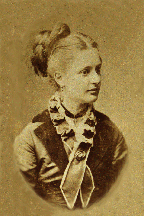 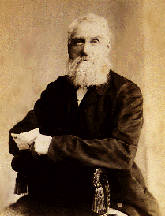
Brian
Mackenzie-Hanson
is the great great grandson of
Thomas
Mackenzie-Hanson
(1851-1917), the son of George
Hanson
(1821-1904) and Sophia
Mackenzie (1828-1894). He is the last remaining male member of his family
to carry the name “Mackenzie-Hanson” after its formation by
his great great great grandparents.
Brian
is very interested in genealogy
and heraldry; he has a powerful genealogy program and maintains a
massive genealogical
database
of his Total Descent and Extended Family
Tree. Brian has researched his family lines of Mackenzie, Hanson and Sackville to the origins of their names and discovered blood desents from the Royal lines of Plantagenet (King John), Wessex (King Edmund II Ironside), Geraldine (through their descent is found the Welsh Royal House of Dinefwr from the Kingdom of Wales to the Kingdom of the Britons), Stewart (Walter fitz Alan the 1st hereditary High Steward of Scotland and the later Stewarts of Atholl), Bruce (King Robert I), Dunkeld (King Malcolm III) and via king Kenneth I Mac Alpin of the Scots to the Kings of Dalriada and the Picts.
The earliest individuals on the Mackenzie-Hanson family tree are, on the Scottish line: King Bridei I of the Picts son of Maelchon who was recorded as ruling between 558-586 AD. Then on the line of the Kindom of the Britons: King Cunobelinus of the Britons who reigned between circa 9 AD and 41 AD.
The principal families in the Mackenzie-Hanson Family Stemma Total Descent are:
Mackenzie
Newson
Stewart
MacLeod
MacDonald
Campbell
Bruce |
Hanson
Mason
Gearing
Scruton
Rhodes
Snee
Clark |
Lane-Fox
Davison
Bryant
Askem
Ruff
Netherclift
Wurr |
Sackville
Pitt-Rivers
Crompton
Howard
Plantagenet
Boleyn
Savage |
Brian was introduced to genealogy by his great uncle, Terence
William Hanson
in 1974. |
Mackenzie Tartans worn by the Mackenzie-Hanson
According to the rules of the Scottish Clan System the Mackenzie-Hanson family, as holders of the name: “Mackenzie” and as descendents of the Mackenzies of Strathgarve, Highfield, Seaforth and Kintail, are entitled to wear the following tartans of the clan:
|
|
|
Mackenzie Modern Tartan |
Mackenzie Old Tartan |
Mackenzie Ancient Tartan |
|
|
Dress Mackenzie Modern Tartan |
Dress Mackenzie Ancient Tartan |
|
|
|
Mackenzie Hunting Green Tartan |
Mackenzie 78th Highlanders Tartan |
Mackenzie Hunting Brown Tartan |
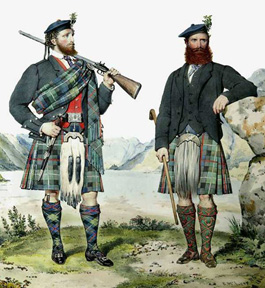
The Clan Mackenzie
The name Mackenzie comes from the third feudal Baron of Kintail (grandson of Colin Mac Coinneach), who was known in the Gaelic as: “Coinneach Mac Coinneach” (Mac Coinneach meaning: Son of the Fair One) which was Anglicised into “Kenneth Mac Kenneth” and then to “Kenneth Mackenzie.” Notice that the letters “k” and “z” are English insertions and as such the “k” should never be capitalised. Kenneth Mackenzie became the 1st Baron of Kintail.
The Mackenzie family is believed to be descendants from “Gilleon nahair'de,” which is Anglicised into “Colin of the Aird.” Tradition holds, which is not borne out by any evidence to the contrary, that the Mackenzies are descended from Colin Mac Coinneach (aka Colin Fitzgerald), a descendent of the Geraldine Clan in Ireland (see “The Royal House of Geraldine” below), who travelled to Scotland with a large number of followers and settled in the Aird about 1261; this may have been with good reason as King Alexander III was planning a massive attack against the Viking invaders and may have been preparing an overwhelming and decisive attack for some years ahead by positioning supporting militias around Scotland. [Jean Dunlop, The Clan Mackenzie, p. 5, and also John McNie The Irish Roots Guide, pp, 9-12] Colin and his followers took up arms against the Vikings and against Haco King of Norway at the battle of Largs in 1263 (At the end of the 1263 Battle of Largs there were an estimated 16,000-24,000 dead Vikings: this was no small brawl!). Colin was said to have so powerfully aided the king and the battle was so victorious that King Alexander III awarded him the lands of Kintail in Ross-shire and was accepted into the king’s court. An historically documented hero of the Battle of Largs is “Peregrinus et Hibernus nobilis ex familia Geraldinorum” deemed to be the same Colin Fitzgerald.” [History Of The Mackenzies by Sir Alexander Mackenzie, www.fullbooks.com/History-Of-The-Mackenzies1.html]
Colin Fitzgerald married the daughter (sorry no name recorded) of Walter Stewart, 3rd Lord High Steward of Scotland and Beatrix the Lady Angus. From there a lineage can be traced to King Ailpin King of Scots and the Kings of Dalriada to King Bridei of the Picts, son of Maelchon, who was recorded as ruling between 558-586 AD. King Bridei I appears in Saint Adomnán’s of Iona (627/8 – 704) account of the Life of Saint Columba (7 December 521 – 9 June 597 AD), King Bridei may have been converted to Christianity by St Columba although there is archaeological evidence to suggest that King Bridei may have already been a Christian. Christianity in Britannia prior to the Synod of Whitby in 664 AD, particularly in the north of the country, was Celtic and followed the pre-Nicaean practices of the Church (prior to the First Council of Nicaea in 325 AD), i.e. observing Easter on the Jewish Passover, Saturday Sabbaths and Arian Christology since the introduction of pre-Nicaean Christianity to Britannia in the 1st and 2nd centuries AD.
“The Death of a Stag”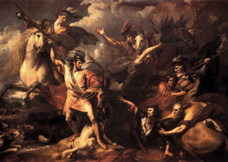
While on a hunting expedition in the forest of Mar with King Alexander III in 1263, a fully grown stag with full antlers suddenly charged at the king, the incident took everyone by surprize and King Alexander’s life was in certain danger. Colin quickly speared the stag in the forehead, killing it outright. For his courage, skill and quick thinking in saving the king’s life and for his services at the battle of Largs, King Alexander III erected Colin’s lands in Kintail into a free Barony by Royal Charter dated: 9th January 1266 and granted him a coat of arms of a golden Stag’s head cabossed (signifying purity) with a tricle of blood running from it’s forehead (reminiscent of the stag’s wound from the MacCaoineach, this dissappeared from later coats of arms) on a blue background (denoting loyalty and truth) along with the motto: “Cuidich'n Righ” meaning “Help the King.” From then and until the battle of Pinkie in 1547 the Mackenzies were the Royal Bodyguard.
A charter was granted by King David II in 1362 confirming the lands of Kintail to the Mackenzies, the Clan Mackenzie Chief Murdo is described as a descendant of Gilleoin of the Aird.
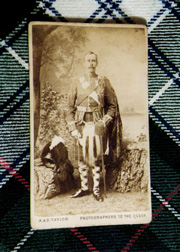 The family has enjoyed many historical events and was known as the “Bluidich MacCoinneach” for their ruthless battles with their neighbours. At its height the Clan Mackenzie owned the largest single area of land in Scotland than any other clan. The Barons of Kintail became the Earls of Seaforth, in 1678 the chief Kenneth Mackenzie 4th Earl of Seaforth became a founding Knight of the Order of the Thistle and during the Jacobite rising and about 1690, Lord Seaforth was created Earl of Fortrose and Marquess of Seaforth (in the Jacobite Peerage of Ireland) by the exiled King James II for his long standing loyalty and his part at the Siege of Derry. The Jacobite Peerages are not recognised by King James’s de facto successors or British law, but the titles were used in Jacobite circles on Continental Europe and recognised by France, Spain and the Papacy. See www.clan-mackenzie.co.uk.
The family has enjoyed many historical events and was known as the “Bluidich MacCoinneach” for their ruthless battles with their neighbours. At its height the Clan Mackenzie owned the largest single area of land in Scotland than any other clan. The Barons of Kintail became the Earls of Seaforth, in 1678 the chief Kenneth Mackenzie 4th Earl of Seaforth became a founding Knight of the Order of the Thistle and during the Jacobite rising and about 1690, Lord Seaforth was created Earl of Fortrose and Marquess of Seaforth (in the Jacobite Peerage of Ireland) by the exiled King James II for his long standing loyalty and his part at the Siege of Derry. The Jacobite Peerages are not recognised by King James’s de facto successors or British law, but the titles were used in Jacobite circles on Continental Europe and recognised by France, Spain and the Papacy. See www.clan-mackenzie.co.uk.
The Mackenzie Lairds of Strathgarve
The family then branched into the Mackenzie Lairds of Highfield, then a further banch into the Lairds of Strathgarve. Much of these families are mapped out in the Findon Tables. The lands on Strathgarve were sold off but the family line continued and moved to Great Yarmouth as sailors. This is were Sophia Mackenzie, daughter of David Mackenzie (pictured right, who started as a sailor then joined the Seaforth Highlanders becoming a CSM), married George Hanson, a master mariner from Castleford; four of their nine children were given the name: “Mackenzie Hanson.” This enabled their children to wear the Mackenzie Tartan according to the Rules of the Scottish Clan System.
The Rules of the Scottish Clan System
Excepting the “District”, “Caledonia” and “Jacobite” tartans, no one should wear a tartan to which he is not by name or descent entitled. To do so is foolish and ill-mannered, invites scorn, and is contrary to the whole principle of the clan system. Nor does one “select” tartans from this or that “line” of ancestors. The vital question is, “To which Clan do I belong?”
1. You “belong” to the clan of which you bear the name or sept name.
2. You have no real right to wear your mother’s tartan unless you have taken her name.
3. You cannot belong to several clans at once.
4. Adherents (cliathe) of non-clan names are, as followers, sometimes allowed to wear the tartan (usually a hunting set if any) and to become members of a clan society.
[“The Scottish Clans & their Tartans” (History of each Clan and full list of Septs) by W. & A. K. Johnston & G. W. Bacon Ltd. Edinburgh and London. First printed 1896; thirty-ninth edition 1958, pp 52 & 54. With (from the introduction on p.7) …
- Clan Sketches prepared by Henry Whyte (“Fionn”).
- Source information was prepared by Sir Thomas Innes of Learney, the Lord Lyon King of Arms.
- Where decisions in Lyon Court are not available, the ancient legal principles have been applied to the circumstances so far as ascertained. The notes on pp.11-55 contain, in highly condensed form valuable, and scientific, historical material regarding the Clan System and its organisation.
- Additional reference among others for page 54: “History of Scotland” by Alexander Muir-Mackenzie, p.41.]
Ultimately the source of this information is the Lord Lyon King of Arms which is the highest authority in Scotland.
The Royal House of Geraldine
Colin Fitz Gerald (aka Colin Mac Coinneach) of the Royal House of Geraldine was a powerful Irish chieftain who settled in the Aird in Scotland about 1261 with a large number of followers to assist King Alexander III to defeat the Vikings.
The progenitor of the Irish FitzGerald dynasty was a Cambro-Norman Marcher Lord, Maurice FitzGerald, Lord of Lanstephan (whence also sprang the Houses of Leinster and Desmond in Ireland), a female line descendant of the Welsh Royal House of Dinefwr, and a participant in the 1169 AD Norman invasion of Ireland. The House of Dinefwr dates back to 825 AD with Merfyn son of Gwriad, so the Norman aspect, appears to be more of an allegiance than descent!
The lineage of the Kingdom of Wales traces to Cunedda (4th century) son of Edern, son of Padarn Beisrudd a Scottish frontier chieftain. However the lineage from the Kingdom of the Britons traces back to Cunobelinus who reigned between circa 9 AD and 41 AD.
The Hanson de Rastrick
A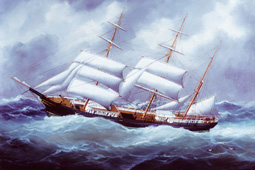 s explained above, the name “Hanson” originates from “Johannes de Rastrick” (NB Johanness was pronounced Yohannes) who was the son of Henricus de Rastrick. Henricus was shortened to Han and hence the name “Han_son.” Johannes de Rastrick held lands in Rastrick, Woodhouse and Totehill in West Yorkshire and he adopted the name
s explained above, the name “Hanson” originates from “Johannes de Rastrick” (NB Johanness was pronounced Yohannes) who was the son of Henricus de Rastrick. Henricus was shortened to Han and hence the name “Han_son.” Johannes de Rastrick held lands in Rastrick, Woodhouse and Totehill in West Yorkshire and he adopted the name 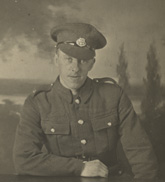 “Hanson” by Act of Parliament in 1330 to distinguish himself from his grandfather, who had the same name and also held lands and business interests in the Ratrick area. The “de Rastrick” family takes its name from the placename Rastrick, which was named as the Proto-Norse / Old Norse: “hreysi wic” in the 7th century meaning “burial mound” + “dairy farm” and was the name of the land that the family owned and farmed. There is still an ancient burial mound at Rastrick today. The family traces back to Roger de Rastrick in 1251. It was common practice at the time to use Norman terms such as “de” meaning “of.”
“Hanson” by Act of Parliament in 1330 to distinguish himself from his grandfather, who had the same name and also held lands and business interests in the Ratrick area. The “de Rastrick” family takes its name from the placename Rastrick, which was named as the Proto-Norse / Old Norse: “hreysi wic” in the 7th century meaning “burial mound” + “dairy farm” and was the name of the land that the family owned and farmed. There is still an ancient burial mound at Rastrick today. The family traces back to Roger de Rastrick in 1251. It was common practice at the time to use Norman terms such as “de” meaning “of.”
The Hansons were mostly land owners and farmers, however Thomas Hanson diversified by buying a public house in Wakefield and a small ship called a sloop, which enabled him to manage his own imports. His son, George Hanson, was a master mariner and settled on Kingston upon Hull; his son, Thomas Mackenzie Hanson was a ship’s steward before he purchased a public house in Hedon then bought a confectionary shop in Sutton-on-Hull. Thomas’ son, Percy Hanson (pictured left), served in WWI in the East Yorkshire Regiment and after the war became a master builder.
The Clan Hanson de Rastrick Association
I'm looking to link with Hansons from around the world to build a wider family or clan network where we can share information, experiences and stories, produce regular newsletters and a magazine, learn about the family's musical gene, organise clan gatherings and summer camps for our children, build a global family tree, share genealogical information, map the Hanson de Rastrick Y-DNA marker and mt-DNA with Genetic Genealogy (we need 44 Hansons to participate in the test!), record for posterity and preservation historic information and artefacts particular and of importance to the Hanson clan and perhaps in the future fund projects pursuant to the furthering of Hanson sentiment and welbeing, and to assist members of our global family where their needs are greatest.
If you are a member or a relative of the Hanson or Rastrick families and would like to become a part of our Global Family, then please do contact me and I will be pleased to add you to our network, NB we also have a Clan Hanson Facebook Page and Group. See you there!
Sola Virtus Invicta!
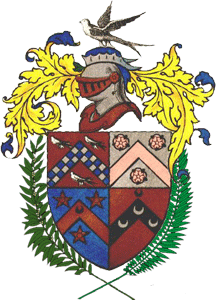
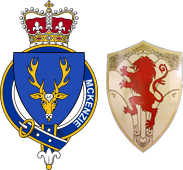
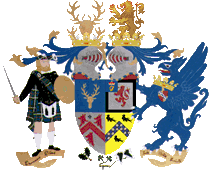
Blazon of Arms
| Author Profile
| Table
of Contents
| Arian
Catholicism
| Home
Please
support the RSPCA, the NSPCC and the RNLI.
 Designed
by Dr. Brian Mackenzie-Hanson, BA (Hons), DD.
Designed
by Dr. Brian Mackenzie-Hanson, BA (Hons), DD.
©1996 - 2013
brian mackenzie-hanson.co.uk
mackenzie-hanson.co.uk



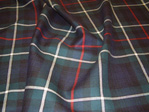
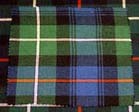
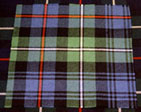
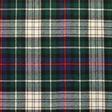
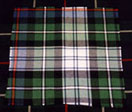
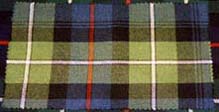
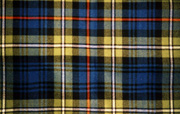
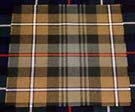


 The family has enjoyed many historical events and was known as the “Bluidich MacCoinneach” for their ruthless battles with their neighbours. At its height the Clan Mackenzie owned the largest single area of land in Scotland than any other clan. The Barons of Kintail became the Earls of Seaforth, in 1678 the chief Kenneth Mackenzie 4th Earl of Seaforth became a founding Knight of the Order of the Thistle and during the Jacobite rising and about 1690, Lord Seaforth was created Earl of Fortrose and Marquess of Seaforth (in the Jacobite Peerage of Ireland) by the exiled King James II for his long standing loyalty and his part at the Siege of Derry. The Jacobite Peerages are not recognised by King James’s de facto successors or British law, but the titles were used in Jacobite circles on Continental Europe and recognised by France, Spain and the Papacy. See
The family has enjoyed many historical events and was known as the “Bluidich MacCoinneach” for their ruthless battles with their neighbours. At its height the Clan Mackenzie owned the largest single area of land in Scotland than any other clan. The Barons of Kintail became the Earls of Seaforth, in 1678 the chief Kenneth Mackenzie 4th Earl of Seaforth became a founding Knight of the Order of the Thistle and during the Jacobite rising and about 1690, Lord Seaforth was created Earl of Fortrose and Marquess of Seaforth (in the Jacobite Peerage of Ireland) by the exiled King James II for his long standing loyalty and his part at the Siege of Derry. The Jacobite Peerages are not recognised by King James’s de facto successors or British law, but the titles were used in Jacobite circles on Continental Europe and recognised by France, Spain and the Papacy. See 
 s explained above, the name “Hanson” originates from “Johannes de Rastrick” (NB Johanness was pronounced Yohannes) who was the son of Henricus de Rastrick. Henricus was shortened to Han and hence the name “Han_son.” Johannes de Rastrick held lands in Rastrick, Woodhouse and Totehill in West Yorkshire and he adopted the name
s explained above, the name “Hanson” originates from “Johannes de Rastrick” (NB Johanness was pronounced Yohannes) who was the son of Henricus de Rastrick. Henricus was shortened to Han and hence the name “Han_son.” Johannes de Rastrick held lands in Rastrick, Woodhouse and Totehill in West Yorkshire and he adopted the name  “Hanson” by Act of Parliament in 1330 to distinguish himself from his grandfather, who had the same name and also held lands and business interests in the Ratrick area. The “de Rastrick” family takes its name from the placename Rastrick, which was named as the Proto-Norse / Old Norse: “hreysi wic” in the 7th century meaning “burial mound” + “dairy farm” and was the name of the land that the family owned and farmed. There is still an ancient burial mound at Rastrick today. The family traces back to Roger de Rastrick in 1251. It was common practice at the time to use Norman terms such as “de” meaning “of.”
“Hanson” by Act of Parliament in 1330 to distinguish himself from his grandfather, who had the same name and also held lands and business interests in the Ratrick area. The “de Rastrick” family takes its name from the placename Rastrick, which was named as the Proto-Norse / Old Norse: “hreysi wic” in the 7th century meaning “burial mound” + “dairy farm” and was the name of the land that the family owned and farmed. There is still an ancient burial mound at Rastrick today. The family traces back to Roger de Rastrick in 1251. It was common practice at the time to use Norman terms such as “de” meaning “of.”


